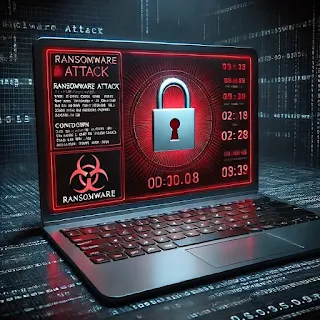Cybersecurity and Data Privacy: How to Stay Safe in the Digital World?.
In today's digital age, cybersecurity and data privacy are among the most critical concerns for individuals and businesses alike. Cyber threats such as hacking, malware, phishing attacks, and data breaches are on the rise. To protect ourselves, it’s essential to understand these risks and take proactive steps to stay secure.
What is Cybersecurity?
Cybersecurity refers to the practice of protecting systems, networks, and data from cyber threats and unauthorized access. It involves security protocols, software, and policies designed to keep individuals and organizations safe.
Why is Data Privacy Important?
Data privacy ensures that personal information remains confidential and is not misused by companies, hackers, or third parties. Tech giants like Google and Facebook collect vast amounts of user data, sometimes raising concerns about privacy breaches. With evolving laws like GDPR and CCPA, data privacy has become a major global issue.
Common Cyber Threats & How to Prevent Them
1. Phishing Attacks
Phishing scams trick users into revealing sensitive data, such as passwords and banking information, through fake emails or fraudulent websites.
Prevention:
- Always verify email links before clicking.
- Avoid responding to suspicious emails or SMS.
- Enable two-factor authentication (2FA).
2. Ransomware Attacks
Ransomware is a type of malware that encrypts your files and demands a ransom for their release.
Prevention:
- Regularly back up important files.
- Avoid downloading attachments from unknown sources.
- Use reliable antivirus software.
3. Weak Passwords & Credential Hacking
Hackers often exploit weak or repeated passwords to gain unauthorized access.
Prevention:
- Use strong, unique passwords for every account.
- Utilize a password manager.
- Enable multi-factor authentication (MFA).
4. Risks of Public Wi-Fi
Public Wi-Fi networks are often unsecured, making it easy for hackers to intercept data.
Prevention:
- Always use a VPN (Virtual Private Network).
- Avoid logging into sensitive accounts on public networks.
- Disable automatic Wi-Fi connections.
Best Practices for Data Privacy
- Check Browser Privacy Settings: Adjust privacy settings and disable unnecessary tracking.
- Limit App Permissions: Avoid granting apps unnecessary access to your location, camera, and contacts.
- Understand Privacy Laws: Be aware of regulations like GDPR and CCPA that protect user data.
Conclusion
Cybersecurity and data privacy are more important than ever. By understanding common threats and taking simple precautions, we can keep our personal and professional data safe.
What are your thoughts?
Have you ever encountered a cyber threat? Share your experiences in the comments below!
Let me know if you want any refinements or additional image suggestions!












0 Comments